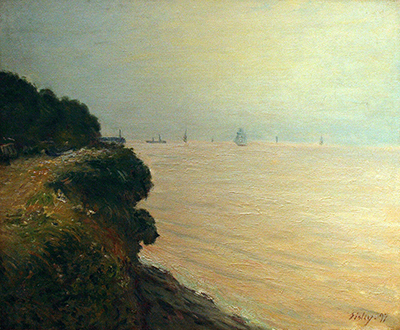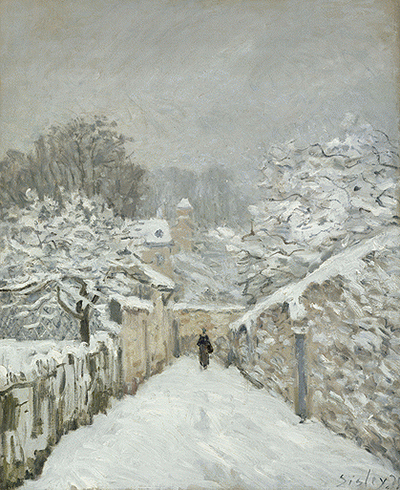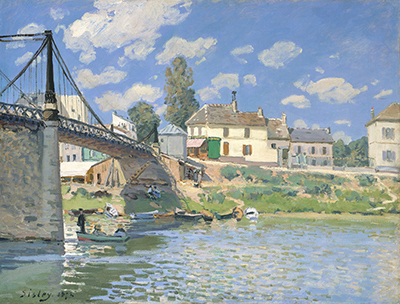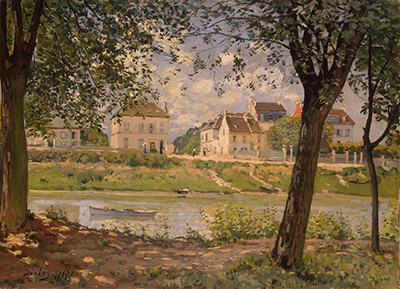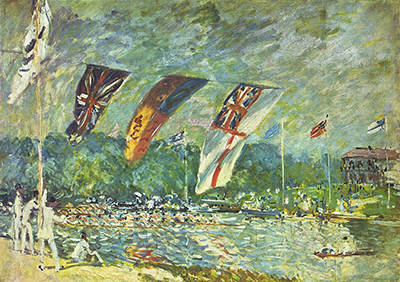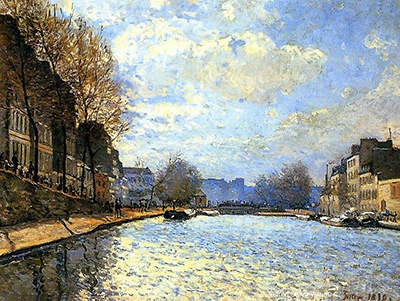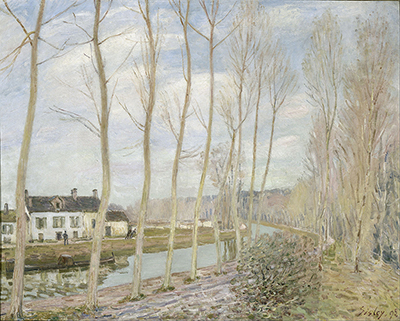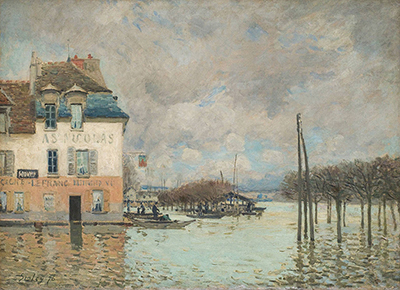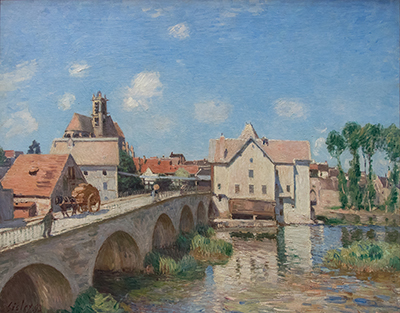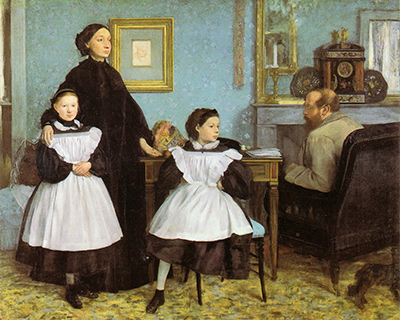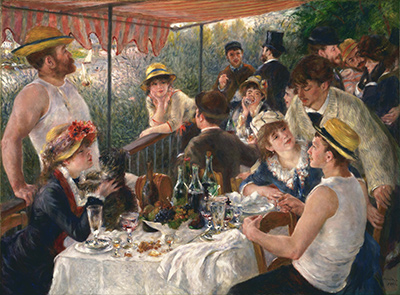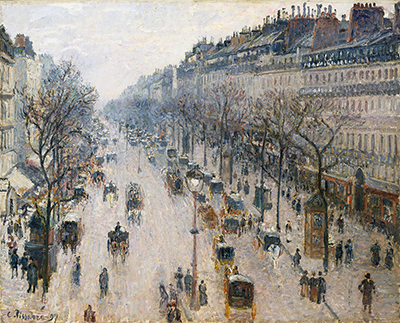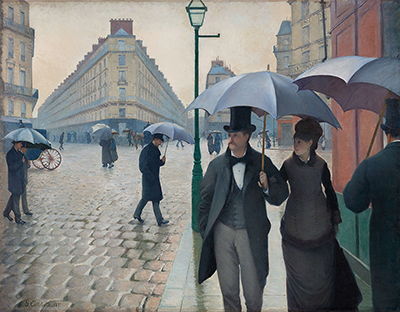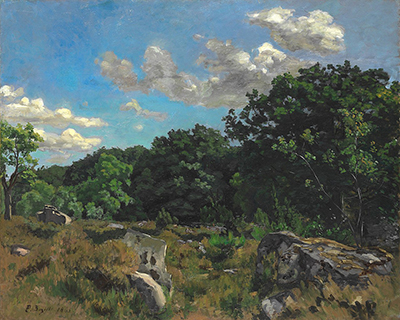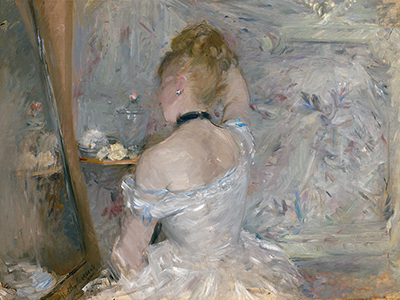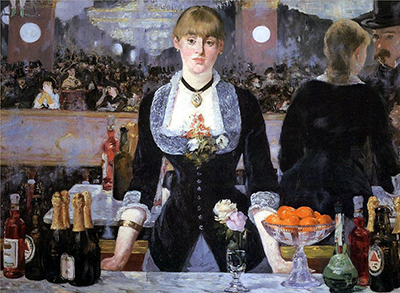Langland Bay by Alfred Sisley is an oil on canvas in Impressionism style and painted in 1872. The dimensions are 39 by 60cm. The painting is situated at the Musée d'Orsay in Paris. The work depicts water and the human life and dwellings around it, as many of the artist's works do.
This is a nice atmospheric painting of an open air scene on a fair day. The painitng is set at a popular tourist area, Langland Bay, on the Gower Peninsula at Swansea, South Wales. The focus is a narrow road bridge at the bay, with people walking on the bridge or stopping to admire the view. The foreground of the picture is the water and the bridge. The water is light blue and clear, reflecting the bridge. The bridge itself is partly wooden, with wood edginges, railings and struts, and the bridge is narrow but wide enough for light traffic, although pedestrians are the only traffic on the bridge at the time. The pedestrians are towards the centre of the bridge, by a solid support, and there is a boat moored underneath it, apparently empty.
There are approximately six pedestrians on the bridge, one is a man walking away from the artist and relying on a walking cane, another is a man leaning on the railings and looking towards the artist, further up is a woman walking away from the artist, and the three pedestrians in the distance are too far away to distinguish but look like a man and two women. The walkers are mainly dressed in dark clothes, and the men wear hats. A lantern on a pole above the far edge of the bridge is there to light it at night.
The far bank of the water is sturdy to protect against tides, with a boat moored by the bridge, and the other side of the bridge shows tidal mud towards the houses. To the left of the bridge on the far side are a few houses with dark trees behind them, while on the right, houses line the tidal mud in cheerful seaside colours, while behind the houses the gorse hills rise up, with possibly a farm sitting atop the main hill behind the village. To the far left, trees line the tidal mud while water flows in the main channel.
More Impressionist Artists



